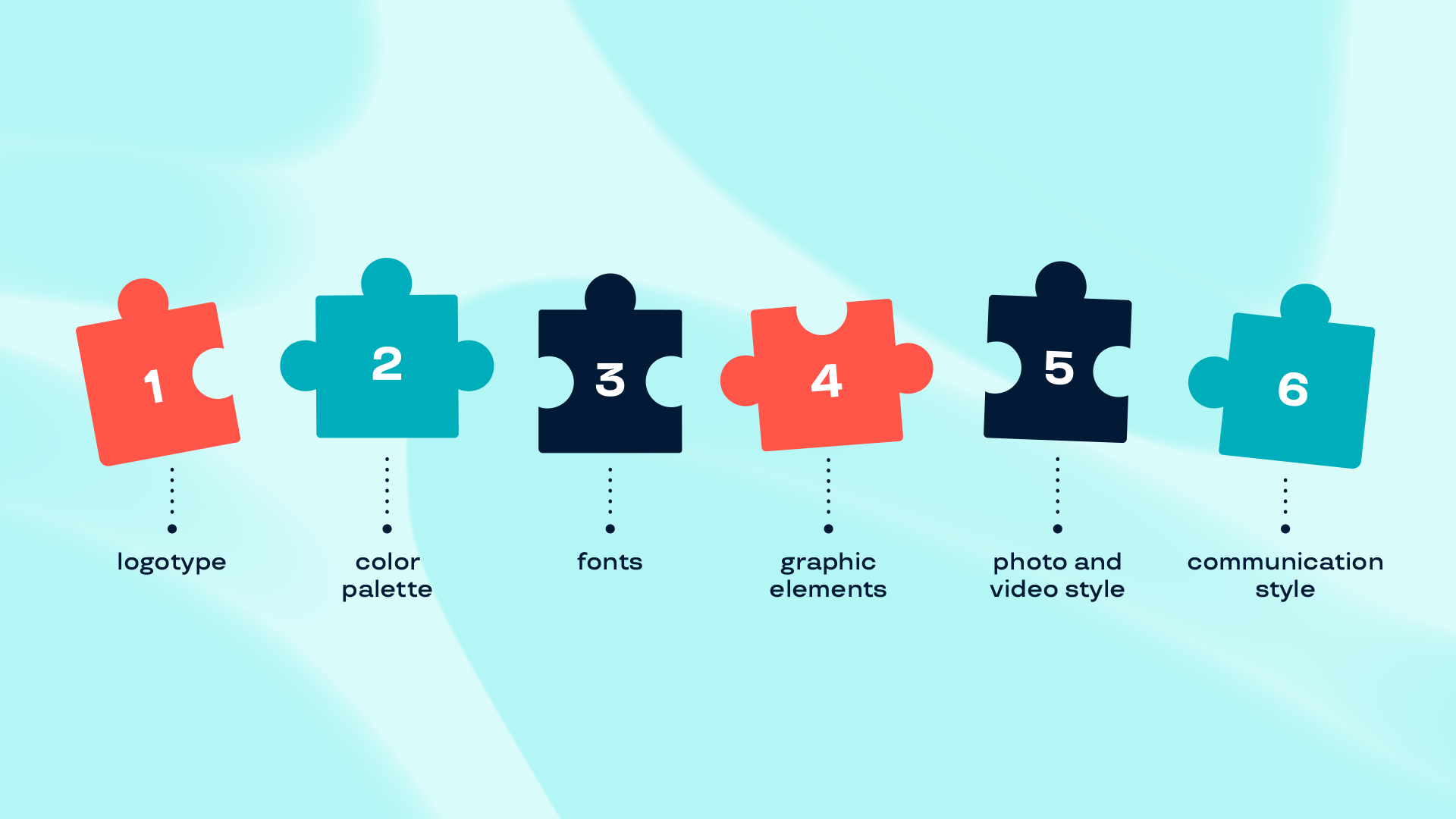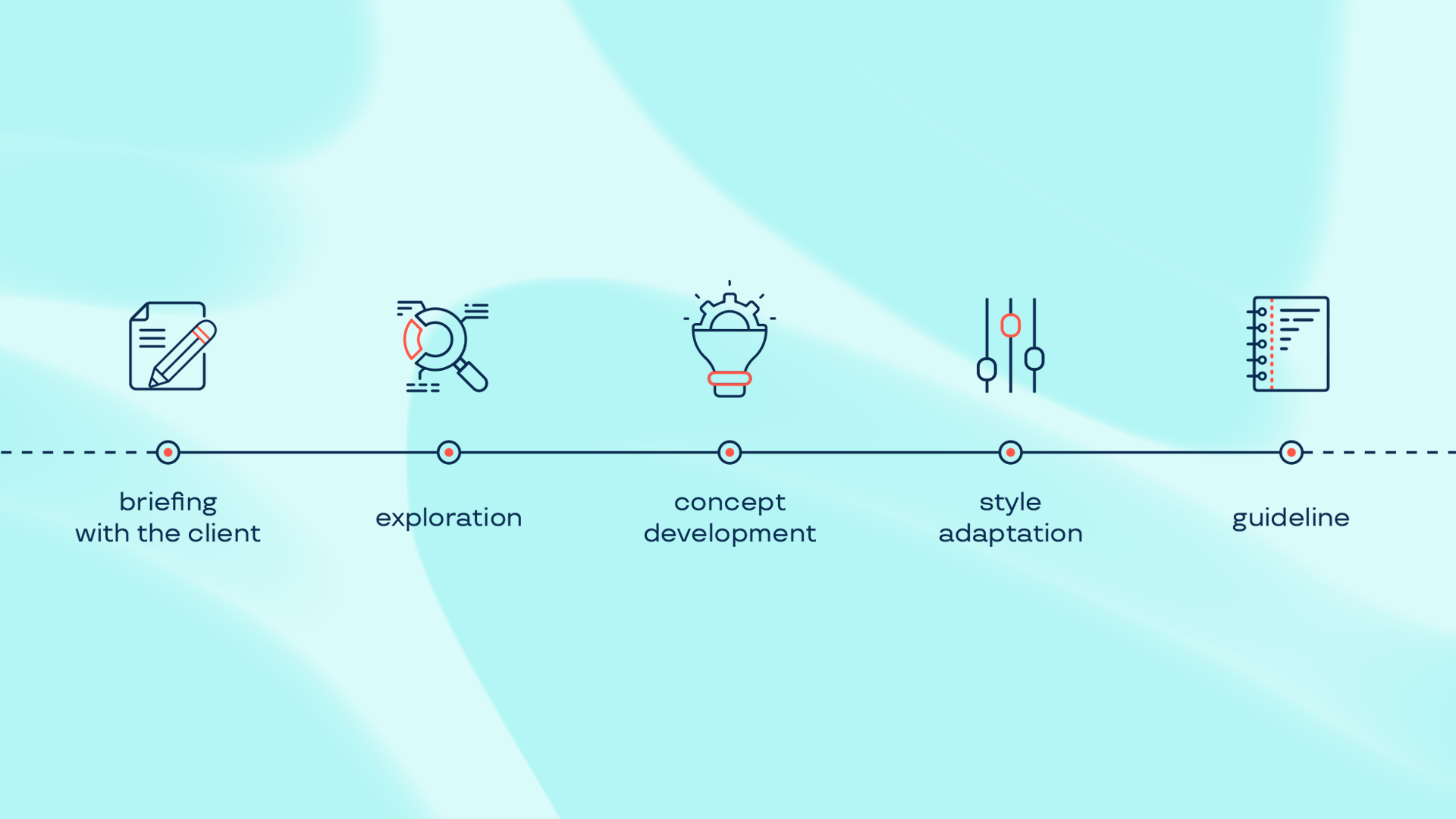Key parts of visual identity and their role in brand strategy
 ICU Branding agency
ICU Branding agency
Introduction
The idea of "visual identity" is essential to brand planning.
There's one for every well-known name. In other words, there isn't a single case of a great brand that doesn't have its look.
Apple and its bit Apple are great examples of this. Many instantly think of the California Corporation when we see this logo. The product's simplicity, design grace, and minimalistic packing make it stand out.
How do you describe your visual identity?
Visual identity is an idea that includes many things that make a brand and its personality stand out.
It uses both text and images to show what the company stands for and how it works.
This is not only how the company looks but also the first thing people see about the brand, which shapes their opinion of it and how they feel about it.

Three visual identity forms exist.
1. Small
The brand identity's primary components include corporate design elements like letterhead and business card layouts, a logo, a collection of typefaces, and a color scheme.
A little visual identity contributes to creating a distinctive brand image for the firm by carrying the main visual identity of the brand. It provides a visual foundation for all kinds of audience-facing marketing communication.
If your business is tiny, you can choose this. Your visual identity can be used in company paperwork, social media, websites, and signage.
2. Large
All the aspects of a modest visual identity are included in this expanded set of brand identity elements, along with extras like corporate uniforms, POS material layouts, patterns, textures, icons, and standard photo and illustration styles.
This visual identity structure works well for developing advertising materials and product packaging and producing a visual brand. It works well for booths, online and brick-and-mortar businesses, and workplace design.
3. System design
This is a sophisticated collection of elements and guidelines for using them, which includes frameworks, templates for digital interface elements, and components for brand identities.
The design system is designed to streamline internal procedures and standardize the business's visual language.
You should become more familiar with the design system if you want to become a corporation's owner. The abundance of templates will automate creative development and assist in synchronizing and unifying the work of the company's many divisions.
How does the brand's visual identity work?
From a logo and color scheme to typefaces and communication style, visual identity components may be organized in a hierarchy.
Naturally, each part should represent the brand's principles, goals, and ethos while fitting in with the overall identity. To produce a complete picture, this is essential.
What are the components of a visual identity?
· The logo. The most prominent visual depiction of the brand is an easily identifiable aspect. It forms the initial perception of the brand.
· A color scheme. The brand's style is defined by the colors that are chosen. They are carefully crafted to elicit specific feelings and memories in buyers.
· Typefaces. Incorporating the brand's personality and style into the font selection process. You may convey the seriousness or lightness of the brand's tone with its typeface.
· Visual components. Images, patterns, or symbols are easily recognized and used to promote the brand. They contribute to the audience's mental image of the brand.
· Style of communication. They identify the characteristics of written and spoken brand expression. Customers can tell the brand's tone by the typefaces and other visual elements.
· Photo and video format. Graphics that represent the brand's spirit. They put the consumer right in the middle of your business.

Attributes of a brand
There are numerous typeface logos, but the one you choose to represent your business may tell people a lot about its values and tone. This is just one example of how visual identity traits can be derived from components.
Attributes are the characteristics that make a visual piece unique from the crowd.
· Identity design. In it, the core principles of the organization are laid down. Expertise is communicated via minimalism and warmth through craftsmanship.
· The brand color scheme. A colour's saturation, brightness, and shade are its defining characteristics. Soothing tones will make the listeners feel at ease, while lively ones will make them laugh.
· Font Style. The audience is presented with the brand in a distinct light via several font classifications. Your brand's website, for instance, can convey its vivacity, grasp of trends, friendliness, and modernism with a monstrous typeface.
· Visual components with designated branding. Visual identity encompasses many elements, such as patterns, images, and infographics.
A signature design element of the Burberry label is a big checkered pattern in beige with black and white stripes. The English cage serves as an inspiration for this design. It represents the entire nation and serves as a visual representation of the brand's high prestige and British origin.

· Style of communication. The tone makes a difference. There is a distinct voice for every brand.
Therefore, our point of view is about catering to each person's unique personality, expressed via communication in the form of brand strategy guidelines.
· Photo and video format. Distinct in demeanor and disposition. Expressed via plot, dress, or landscape.
Elegant ladies are a constant in Estel picture sessions; this quality speaks volumes about the company and its intended consumers.

Visual identity and its significance
Beyond visually representing the organization, visual identity shapes how others perceive it.
Not only does this assist people to remember your brand, but it also keeps them coming back for more.

You will benefit from the company's visual identity because:
· Set the brand apart from its rivals.
The visual identity will help you associate the items with the brand and show that they go hand in hand.
· Boost the product's worth and asking price.
The company's visual identity makes it more appealing to consumers and elevates its standing in viewers' minds. This allows the company to charge more for their goods.
· Establish a personal rapport with your viewers.
Customers are likely to associate the brand with its visual identity. Therefore, the customer feels more at ease when using a light green color scheme.
· Integrate different parts of the design into one cohesive whole.
Visual identity in design unifies all of a company's characteristics. All of the brand's communication channels become cohesive because of this.
· Make it cheaper to establish communication.
Ads with a distinct visual identity are more effective and cost less. The reason behind this is the extensive usage of all its parts in various forms of communication, including advertisements, business resources, and in-person presentations.
· To establish a shared goal inside the company's culture.
The company's visual identity reflects employee solidarity and a shared sense of purpose. Employees can create bonds with one another through the uniform, which improves the visual impression.
What steps are involved in creating a visual identity?
Deep immersion is necessary for the process of developing a visual identity.
The following steps are among the primary ones in this process:

Giving the client a briefing.
· Identifying your requirements, desires, and objectives is the aim.
· How it works: based on the particulars of the assignment, we pose many pre-planned questions.
Discovery.
· The objective is to ascertain which key components of the visual identity will work best to exhibit identity and differentiate your business from competitors.
· How it works: we research the product, the market, and the rivals, find references, and develop ideas.
The creation of concepts.
· Objective: to recognize your brand and emphasize its key attributes and competitive advantages.
· The process follows: select a color scheme, typefaces, visual components, and communication style that best represents your brand.
Modification of style.
· The aim is to ensure that the visual identity is practical.
· The process follows: we ascertain the rationale behind converting the design to various formats, illustrate the updated media, and create layouts for various requirements.
Guideline.
· The aim is to harmonize the usage of all visual identity components.
· The procedure is as follows: we develop guidelines for the usage of visual identity and compile the regulations into one manual.
Conclusion
What is visual identity?
Visual identity serves as its public face and is a comprehensive system that embodies a brand's values, mission, aim, and advantages.
This technique will help your target audience remember your brand by bringing it to their notice, differentiating it from the competition, and emphasizing its benefits.
An organization's visual identity serves to bring its employees together.
Your company's visual identity may help you launch products at a lesser cost by cutting down on the expense of advertising, in-person speeches, and social media marketing.
Subscribe to my newsletter
Read articles from ICU Branding agency directly inside your inbox. Subscribe to the newsletter, and don't miss out.
Written by

ICU Branding agency
ICU Branding agency
Branding agency that creates a connection between business and audience through in-depth research and creative thinking.